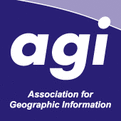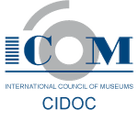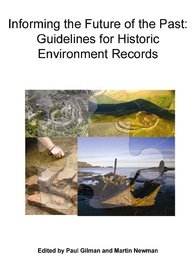Useful Information Resources
This page list some of the many useful information resources produced by the heritage sector in Britain and world-wide. Areas covered include terminology resources, guidelines for recording artefacts, geospatial information and digital archiving, brief introduction to examples of heritage information systems, FISH Fact Sheets (covering specific topics) and further information on the FISH Toolkit. Please go to the referenced web pages for further information.
Terminology resources
British Museum Materials Thesaurus
Hierarchical list of current and historical terms for different materials used by museum curators.
© British Museum
http://www.collectionstrust.org.uk/assets/thesaurus_bmm/matintro.htm
© British Museum
http://www.collectionstrust.org.uk/assets/thesaurus_bmm/matintro.htm
Art & Architecture Thesaurus (AAT)
A structured vocabulary used for describing items of art, architecture and material culture. Mainly used by museums, art libraries, archives, cataloguers, and researchers in art and art history.
© Getty Research Institute/ J.Paul Getty Trust
http://www.getty.edu/research/tools/vocabularies/aat/index.html
© Getty Research Institute/ J.Paul Getty Trust
http://www.getty.edu/research/tools/vocabularies/aat/index.html
Cultural Objects Name Authority (CONA)
A controlled vocabulary for indexing cultural works such as architecture and movable items, including all types of paintings, textiles, manuscripts, sculptures, furniture and archaeological artefacts. It is used by both academic and museum communities.
© Getty Research Institute/ J.Paul Getty Trust
http://www.getty.edu/research/tools/vocabularies/cona/index.html
© Getty Research Institute/ J.Paul Getty Trust
http://www.getty.edu/research/tools/vocabularies/cona/index.html
Getty Thesaurus of Geographic Names (TGN)
A controlled list of names and associated information about geographical entities, including administrative and political places (e.g. cities, nations) and physical features (e.g., mountains, rivers). Includes current and historical places and information related to history, population, culture, art and architecture.
Copyright: Getty Research Institute/ J.Paul Getty Trust
http://www.getty.edu/research/tools/vocabularies/tgn/index.html
Copyright: Getty Research Institute/ J.Paul Getty Trust
http://www.getty.edu/research/tools/vocabularies/tgn/index.html
Union List of Artist Names (ULAN)
A controlled list of names of circa 120,000 artists, generally creators of visual arts and architecture, not so much performance artists and actors or dancers.
© Getty Research Institute/ J.Paul Getty Trust
http://www.getty.edu/research/tools/vocabularies/ulan/index.html
© Getty Research Institute/ J.Paul Getty Trust
http://www.getty.edu/research/tools/vocabularies/ulan/index.html
Guidelines for knowledge organization
International Society for Knowledge Organization (ISKO)
An extensive and authoritative resource online providing articles and guidance on knowledge organization, data standards and vocabularies. Their online database of KO literature contains useful material: http://www.isko.org/lit.html
http://www.isko.org/index.php
An extensive and authoritative resource online providing articles and guidance on knowledge organization, data standards and vocabularies. Their online database of KO literature contains useful material: http://www.isko.org/lit.html
http://www.isko.org/index.php
Guidelines for recording sites and monuments
International Core Data Standard for Archaeological Sites and Monuments
Minimum categories of information required to make a reasonable assessment of a monument or site, whether for planning, mangagement, academic, or other purposes. http://archives.icom.museum/objectid/heritage/intro4.html
© ICOM
http://archives.icom.museum/objectid/heritage/int.html
International Core Data Standard for Archaeological Sites and Monuments
Minimum categories of information required to make a reasonable assessment of a monument or site, whether for planning, mangagement, academic, or other purposes. http://archives.icom.museum/objectid/heritage/intro4.html
© ICOM
http://archives.icom.museum/objectid/heritage/int.html
Guidelines for recording artefacts

SPECTRUM
An international standard for documentation procedures in museums. Developed and maintained by The Collections Trust (UK).
https://www.essex.ac.uk/ldev/documents/going_digital/Introduction_to_Spectrum_procedures.pdf
An international standard for documentation procedures in museums. Developed and maintained by The Collections Trust (UK).
https://www.essex.ac.uk/ldev/documents/going_digital/Introduction_to_Spectrum_procedures.pdf
Object ID
An international standard for describing cultural objects, launched in 1997 and promoted by major law enforcement agencies, including the FBI, Scotland Yard and Interpol, UNESCO, museums, cultural heritage organizations, art trade and art appraisal organizations, and insurance companies.
http://archives.icom.museum/objectid/about.html
An international standard for describing cultural objects, launched in 1997 and promoted by major law enforcement agencies, including the FBI, Scotland Yard and Interpol, UNESCO, museums, cultural heritage organizations, art trade and art appraisal organizations, and insurance companies.
http://archives.icom.museum/objectid/about.html
Guidelines for recording geospatial information

UK GEMINI
Discovery Metadata Standard (version 2.2, 2012) - specifies a set of metadata elements for describing geographic datasets. MIDAS Heritage complies with this standard and the UK e-Government Metadata Standard (e-GMS). http://www/ago/prg/il/uk-gemini/
UK GEMINI (Geo-spatial Metadata Interoperability Initiative)
"UK GEMINI is a specification for a set of metadata elements for describing geospatial data resources for discovery purposes. It has been produced and is maintained by the AGI Standards Committee. It is a free of charge resource provided by the AGI for the benefit of the GI community."
http://www.agi.org.uk/uk-gemini/
Discovery Metadata Standard (version 2.2, 2012) - specifies a set of metadata elements for describing geographic datasets. MIDAS Heritage complies with this standard and the UK e-Government Metadata Standard (e-GMS). http://www/ago/prg/il/uk-gemini/
UK GEMINI (Geo-spatial Metadata Interoperability Initiative)
"UK GEMINI is a specification for a set of metadata elements for describing geospatial data resources for discovery purposes. It has been produced and is maintained by the AGI Standards Committee. It is a free of charge resource provided by the AGI for the benefit of the GI community."
http://www.agi.org.uk/uk-gemini/
Guidelines for recording concepts and relationships
Arches Project

A collaboration between the Getty Conservation Institute (GCI) and World Monuments Fund (WMF) to develop an open source, web- and geospatially based information system that is purpose-built to inventory and manage immovable cultural heritage. Arches incorporates widely adopted standards (for heritage inventories, heritage data, thesauri, and information technology) so that it will offer a solid foundation that heritage institutions may customize to meet their particular needs. Arches is built using open source software tools to make its adoption cost effective, and to allow heritage institutions to pool resources to enhance Arches in mutually beneficial ways."
http://archesproject.org
http://archesproject.org
Arches and CRM Compliance

The CIDOC Conceptual Reference Model (CRM) is an “ontology” for cultural heritage information that has been developed by a the International Committee for Documentation (CIDOC) of the International Council of Museums. In 2006 the International Organization for Standardization adopted it as standard ISO 21127:2006 (Information and Documentation: A Reference Ontology for the Interchange of Cultural Heritage Information).
Use of this model allows Arches to consistently represent disparate, localized information and descriptions of cultural heritage in a coherent, configurable, and globally compatible way. The CRM’s incorporation will also ease integration between Arches and other systems compatible with the CRM, between separate implementations of Arches, and between related information management systems. The information, including objects and relationships, in an information management system, can be mapped to the level of the CIDOC CRM. Arches incorporates a default mapping of its database to CRM classes and properties.
http://archesproject.org/graphs
Use of this model allows Arches to consistently represent disparate, localized information and descriptions of cultural heritage in a coherent, configurable, and globally compatible way. The CRM’s incorporation will also ease integration between Arches and other systems compatible with the CRM, between separate implementations of Arches, and between related information management systems. The information, including objects and relationships, in an information management system, can be mapped to the level of the CIDOC CRM. Arches incorporates a default mapping of its database to CRM classes and properties.
http://archesproject.org/graphs
Recording guidelines for digital data
Informing the Future of the Past (2nd version)

Guidelines for British Historic Environment Records (HERs)
"The essential set of working guidelines appropriate to all HERs, large and small, and for all staff, volunteers and students involved in managing, running, using or supporting an HER. These guidelines have been developed to assist those who manage, work in and use Historic Environment Records (HERs). They provide an introduction to the HERs and the services that they provide, set out agreed guidelines for working practices, support the delivery of training information and advice, and provide a guide to all aspects of HER management, working practices, standards, systems and services."
http://archaeologydataservice.ac.uk/ifp
"The essential set of working guidelines appropriate to all HERs, large and small, and for all staff, volunteers and students involved in managing, running, using or supporting an HER. These guidelines have been developed to assist those who manage, work in and use Historic Environment Records (HERs). They provide an introduction to the HERs and the services that they provide, set out agreed guidelines for working practices, support the delivery of training information and advice, and provide a guide to all aspects of HER management, working practices, standards, systems and services."
http://archaeologydataservice.ac.uk/ifp
ADS & Digital Antiquity: Guides to Good Practice (2nd version)
A series of Guides to Good Practice produced by Archaeology Data Service (UK) and Digital Antiquity (USA), focusing on best practice in digital archiving. New subject areas cover marine survey, laser scanning, close-range photogrammetry, digital audio and digital video.
http://guides.archaeologydataservice.ac.uk/g2gp/Contents
http://guides.archaeologydataservice.ac.uk/g2gp/Contents
Key European Projects
DARIAH: http://www.dariah.eu/
The Digital Research Infrastructure for the Arts and Humanities aims to enhance and support digitally-enabled research and teaching across the humanities and arts.
Europeana: http://www.europeana.eu/portal/
A database of over 30 million items from some 2,000 of Europe's cultural institutions.
ARIADNE: http://www.ariadne-eu.org/
A not-for-profit association that carries out research to improve creation, sharing and reuse of knowledge through the use of technology.
ARENA: https://pure.york.ac.uk/portal/en/publications/enter-the-arena(4c8d705e-adca-4ac1-8c71-f76ab9f21bdf)/export.html
Archaeological Records of Europe. The ARENA search portal allows you to search for archaeological sites and monuments from six European countries: Denmark, Great Britain, Norway, Iceland, Romania and Poland.
CARARE: https://sites.google.com/a/dcu.gr/carare-eu/
CARARE is a best practice network funded by the European Commission’s ICT Policy Support Programme. It brings together heritage agencies and organisations, archaeological museums and research institutions and specialist digital archives from all over Europe to establish a service that will make digital content for Europe's archaeological monuments and historic sites interoperable with Europeana. It aims to add the 3D and Virtual Reality content to Europeana.
LoCloud: http://www.locloud.eu/
LoCloud is a Best Practice Network of 31 partners, co-funded under the CIP ICT-PSP Programme of the European Commission. Its overall goal is to add to over 4 million digital resources from European cultural institutions to Europeana.
DARIAH: http://www.dariah.eu/
The Digital Research Infrastructure for the Arts and Humanities aims to enhance and support digitally-enabled research and teaching across the humanities and arts.
Europeana: http://www.europeana.eu/portal/
A database of over 30 million items from some 2,000 of Europe's cultural institutions.
ARIADNE: http://www.ariadne-eu.org/
A not-for-profit association that carries out research to improve creation, sharing and reuse of knowledge through the use of technology.
ARENA: https://pure.york.ac.uk/portal/en/publications/enter-the-arena(4c8d705e-adca-4ac1-8c71-f76ab9f21bdf)/export.html
Archaeological Records of Europe. The ARENA search portal allows you to search for archaeological sites and monuments from six European countries: Denmark, Great Britain, Norway, Iceland, Romania and Poland.
CARARE: https://sites.google.com/a/dcu.gr/carare-eu/
CARARE is a best practice network funded by the European Commission’s ICT Policy Support Programme. It brings together heritage agencies and organisations, archaeological museums and research institutions and specialist digital archives from all over Europe to establish a service that will make digital content for Europe's archaeological monuments and historic sites interoperable with Europeana. It aims to add the 3D and Virtual Reality content to Europeana.
LoCloud: http://www.locloud.eu/
LoCloud is a Best Practice Network of 31 partners, co-funded under the CIP ICT-PSP Programme of the European Commission. Its overall goal is to add to over 4 million digital resources from European cultural institutions to Europeana.
FISH Fact Sheets
FISH Fact Sheet: A six step guide to digital preservation
The first Fact Sheet from the Forum on Information Standards in Heritage (FISH) in collaboration with the Archaeology Data Service (ADS), providing a six-step guide to digital preservation. Intended as a quick reference guide, it covers: planning; backup; security; documentation; refreshment; and migration. A PDF of the Fact Sheet can be downloaded from the ADS website for hard-copy creation.
Article. Series: Archaeology Data... Issue 19 (2006)
Authors: Forum on Information Standards in Heritage, ; Archaeology Data Service,
http://ads.ahds.ac.uk/newsletter/issue19/fishsheet1.pdf
FISH Factsheet 2: MIDAS Heritage: The UK Historic Environment Data Standard
Article. Series: Archaeology Data... Issue: 21 (2007)
URL/DOI: http://ads.ahds.ac.uk/newsletter/issue21/fact_sheet_2.pdf
Reports on the latest edition of the UK data standard for information about the historic environment.
http://ads.ahds.ac.uk/newsletter/issue21/fact_sheet_2.pdf
The first Fact Sheet from the Forum on Information Standards in Heritage (FISH) in collaboration with the Archaeology Data Service (ADS), providing a six-step guide to digital preservation. Intended as a quick reference guide, it covers: planning; backup; security; documentation; refreshment; and migration. A PDF of the Fact Sheet can be downloaded from the ADS website for hard-copy creation.
Article. Series: Archaeology Data... Issue 19 (2006)
Authors: Forum on Information Standards in Heritage, ; Archaeology Data Service,
http://ads.ahds.ac.uk/newsletter/issue19/fishsheet1.pdf
FISH Factsheet 2: MIDAS Heritage: The UK Historic Environment Data Standard
Article. Series: Archaeology Data... Issue: 21 (2007)
URL/DOI: http://ads.ahds.ac.uk/newsletter/issue21/fact_sheet_2.pdf
Reports on the latest edition of the UK data standard for information about the historic environment.
http://ads.ahds.ac.uk/newsletter/issue21/fact_sheet_2.pdf
